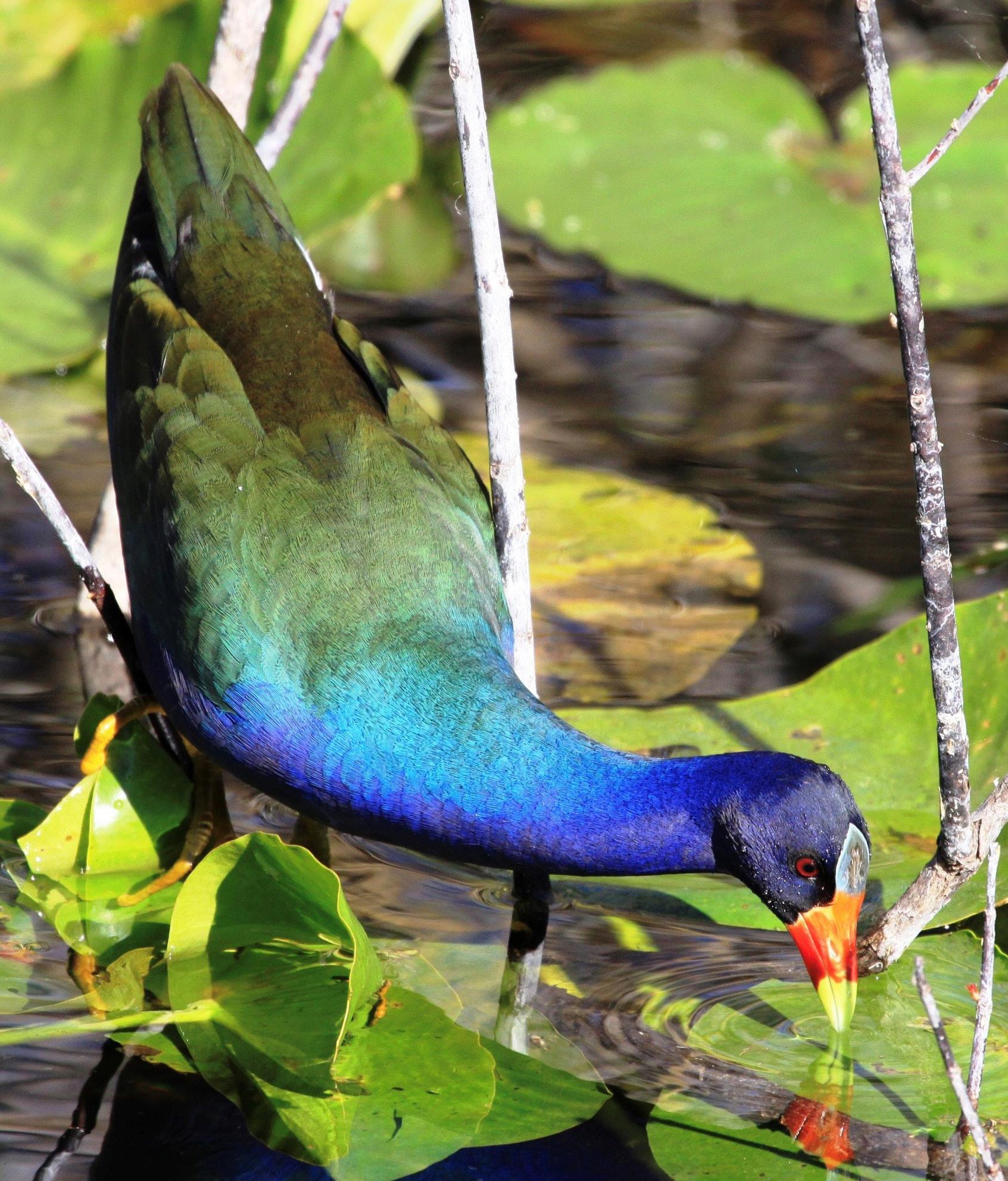
SOUTH FLORIDA’S WILDSIDE South Florida Wildlife Center’s Quarterly Newsletter | Education | Patient Updates | Events Spring 2024 www. SouthFloridaWildlifeCenter.org • (954) 524 - 4302 • Hours: 9:00AM - 4:30PM OUR MISSION: PROTECTING WILDLIFE THROUGH RESCUE, REHABILITATION, AND EDUCATION. SFWC is participating in The Batchelor Foundation Matching Challenge! Learn how you can help wildlife today.
SOUTH FLORIDA’S
Executive Director
Alessandra Medri
Office Manager
JoAnne Mayz
Business Development Manager
Noreen Abrams
Director of Outreach
Carolina Montano
Volunteer Coordinator
Camila Pulido
Outreach Coordinators:
Khrystyne Jamerson
Alyson Fishbein
Outreach Specialists:
Amanda White
Tava Boeckel
Medical Director
Charlotte Cournoyer, DVM
Associate Veterinarian
Erica Sheppard, DVM
Clinic Supervisor
Joscelyn Bentz
Veterinary Assistants:
Sandy Pagel
Natalie Hess
Shannon Lamontagne
Rhianna Miller
Rehabilitation Supervisor
Maria Vanegas
Rescue & Release Team Leads:
Nick Sonzogni
Melanie Lemieux
Lead Wildlife Rehabilitator
Joe Hausfeld
Wildlife Rehabilitators:
Jessica Ferrigno
Lisa Bergwin
Erika Piechowski
Eloisa Valencia
Mercy Torres
Shannon Doherty
Riley Munsen
Milagros Otero
Hannah Reed
Facilities Manager
Glenn Georgis
Facility Technicians:
Anthony Weare
Gary Hecker
BOARD OF DIRECTORS
Jeffrey J. Arciniaco
President, Board Chairman
Thomas J. Sabatino Jr.
Vice Chairman, Secretary
Thomas A. Bartelmo
Treasurer
Ardath Rosengarden
Director
Doug Koger
Director
Eric L. Bernthal
Director

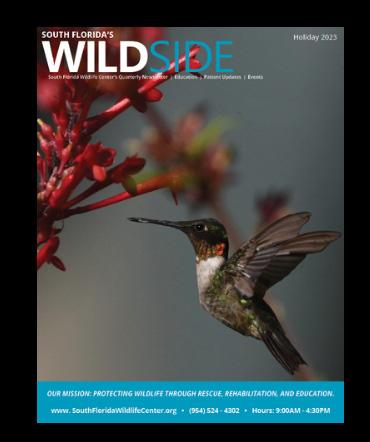

11 | Slithering Success 12 | Community Heroes 15 | Remarkable Rescue 17 | Species Spotlight 18 | Staff Feature 21 | Plunging Peril 22 | Wildlife Warriors 04 2023 Stats 07 Make a Difference 08 A Toast to LauderAle
OF CONTENTS
TABLE
STAFF
000000 00000000000000000000 0000000000000000000
Missed previous editions of South Florida’s Wild Side? Check them out at https://issuu.com/sfwc Cover photo is 2022 Wildlife Photography Contest entry of an American Purple Gallinule by Jeff Weber.
Join our Wildlife Educators at SFWC for a private Wild Talk & Tour and learn about the local wildlife and the adaptations that help them survive in this urban environment. Meet some Animal Ambassadors and discover their personal stories and how you can help their species! Call us at 954 524 4302 to book your visit.
WILDSIDE
BATCHELOR FOUNDATION 2024 CHALLENGE

Today, your gift will be doubled to help South Florida’s wildlife survive and thrive!
For more than five decades, the South Florida Wildlife Center has served as a vital resource for the most vulnerable creatures that cohabitate with us in our communities. We are grateful for friends like you, who continue to support our work. Your generosity helps to provide rescue, rehabilitation, and life-saving veterinary care for more than 8,000 animals each year.
As urban development threatens natural wildlife habitats, the need to treat more and more patients, like Brown Pelicans, Bald Eagles, and Virginia Opossums, grows. Simply put, we need your help — and today, you can make an immediate and dramatic contribution to our work.
Thanks to The Batchelor Foundation’s incredible generosity, the South Florida Wildlife Center has been presented with The Batchelor Foundation 2024 Matching Challenge. Your gift, at any level, will be matched 1:1 – up to $50,000 through the end of June.
This means donating a $20 gift today will become $40, thanks to The Batchelor Foundation dollarfor-dollar match. We appreciate your support in helping maximize this wonderful gift-matching opportunity. Through the kindness and generosity of donors like you, we can continue to provide critical help for injured and orphaned animals and educate our communities about peaceful human coexistence with wildlife and their vital role in our precious ecosystem.

Thank you to our generous grant partner for making this matching gift opportunity possible!
southfloridawildlifecenter.org | 3
2023 STATS ANOTHER WILD YEAR!
7,199
patients from 263 species
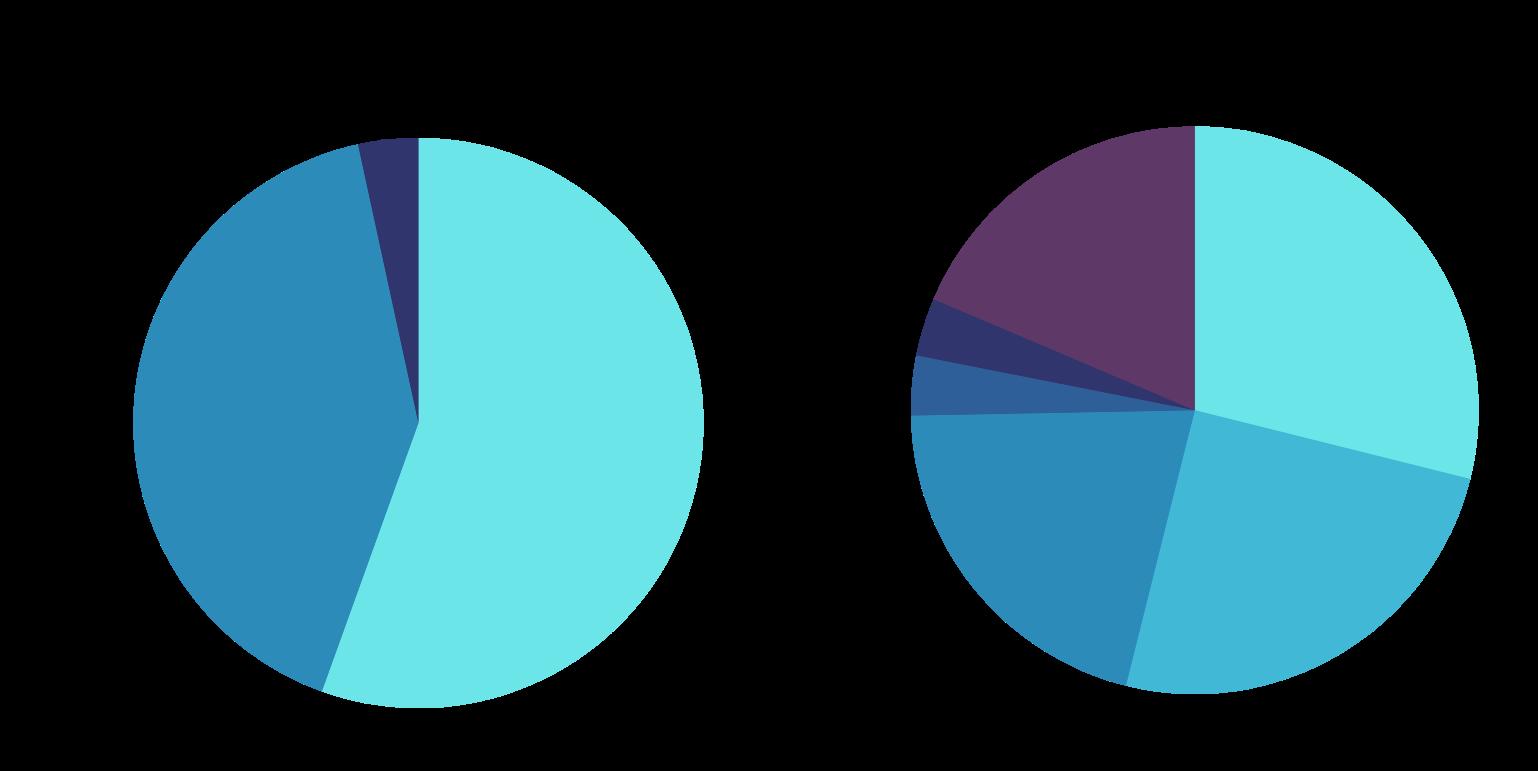
VOLUNTEER PROGRAM
206 Volunteers donated over 10,000 hours.
7 Organizations volunteered over 500 hours through our Days of Giving. 21 HomeCare Heroes helped 200 babies get a second chance at life.
STUDENT PROGRAM
52 Students donated over 10,000 hours!
OUTREACH & EDUCATION
In 2023, our efforts paid off as we reached over 200,000 members in our community through our hotline and outreach programs. We are proud to have made such a positive impact on our community and are committed to continuing our work in the years to come.
We are also excited to announce that our online presence has reached new heights, with over 10,000,000 people engaging with us through social media, our weekly e-newsletter, our website, and more! We are thrilled to have such a large and active online community, and we want to thank each and every one of you for your support. We will continue to provide you with valuable content and engaging experiences online. So stay tuned for more exciting updates!
4 | South Florida’s WildSide | Spring 2024
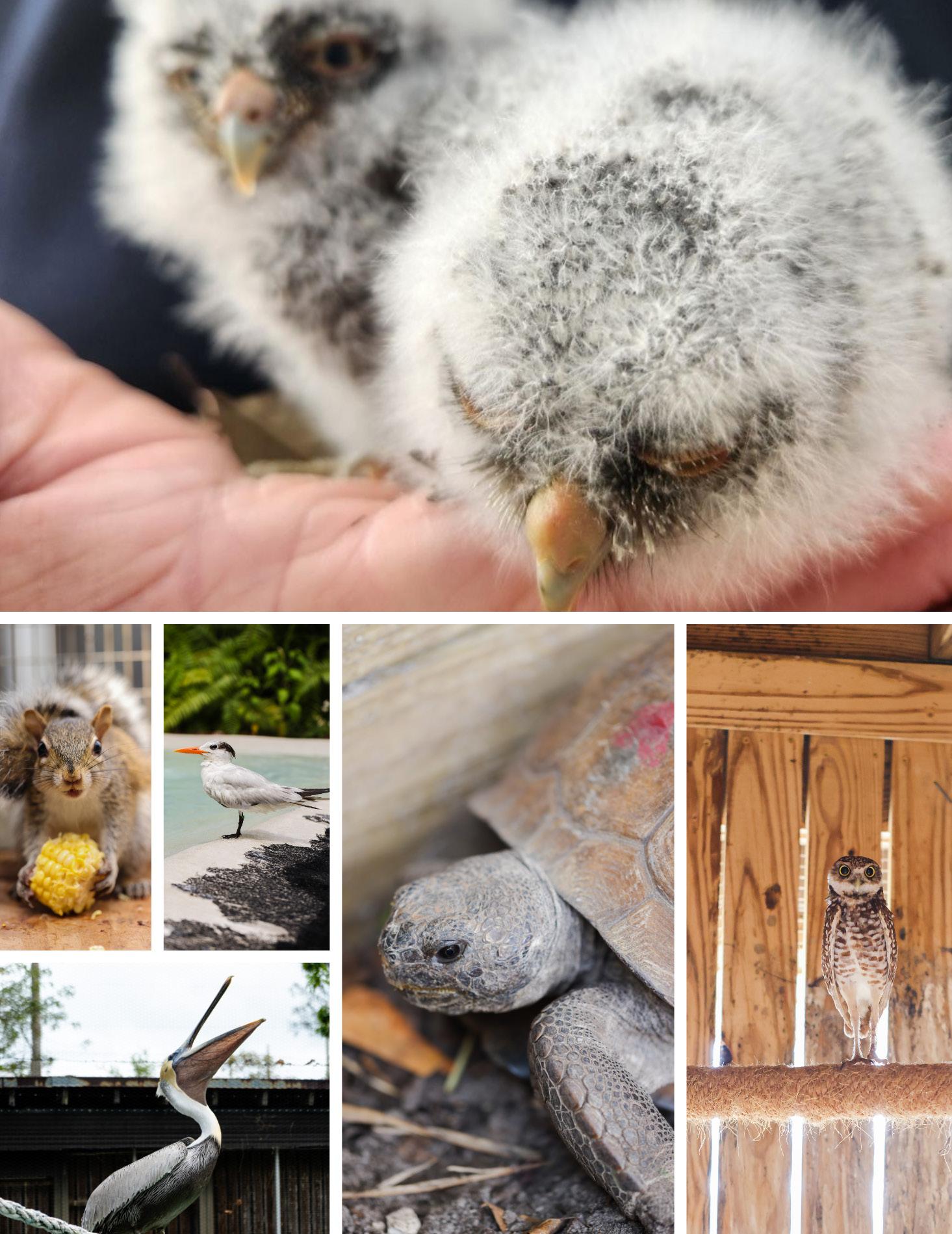

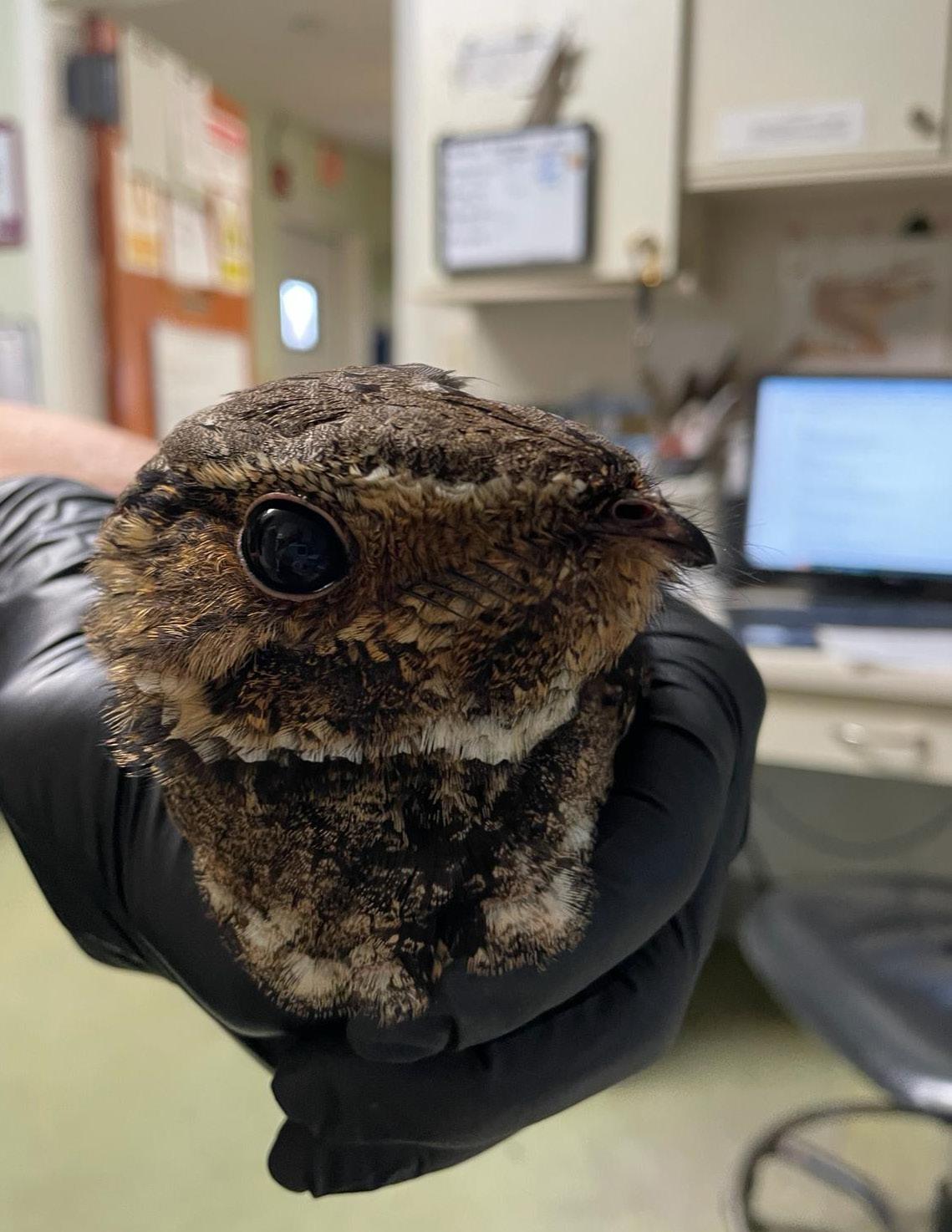
CHUCK-WILL’S-WIDOW #24-1250
The Chuck-will’s-widow is a nocturnal bird species that primarily feeds on insects which they catch in flight using their wide mouths and specialized bristles around their bills. This patient arrived at our hospital from Hollywood when a concerned citizen suspected the bird to have an injured wing. With no major injuries and small ulcers present in his eyes, he was placed under observation and supportive care. After 10 days of rehabilitation, this Chuck-will’s-widow regained the strength to fly and was returned to the wild.
MAKE A DIFFERENCE
DONATE GOODS
Donate your car, truck, motorcycle, RV, or boat to SFWC by simply going to this website and completing a quick and easy form: careasy.org/SouthFloridaWildlifeCenter.
If you own property in the tri-county area we serve—Palm Beach, Broward, or Miami-Dade—and would be willing to let us release wild animals on your land, we would love to hear from you!
Our lifesaving work requires various items to treat injured and orphaned wildlife. Many used household supplies such as blankets, towels and bowls are always needed to keep our wildlife hospital operating 7 days a week, 365 days a year. Check out our website for specific items you may already have.
DONATE YOUR TIME
Volunteer at SFWC alongside the staff in a variety of positions. The monthly commitment is only 6 hours per month and is tailored to your skills and desires. If not, volunteer during our scheduled one-day events either at SFWC or during one of our beach clean-ups!
During baby season, we also have the unique opportunity to volunteer from home where orphaned babies need 24/7 care and go home with trained volunteers until they are admitted into the nursery.
DONATE FUNDS
Please help us continue our mission! SFWC receives no state or municipal funding. Make a one-time financial contribution online, by mail or in person.
Join the flock! Make a financial contribution each month. Giving monthly is the most powerful way to create a lasting impact and make a difference in saving the wildlife of our urban jungle.
Adopt an Ambassador! Your support of our Stay Wild! Adoption Program helps to provide the best possible veterinary care, staffing, training, and husbandry, as well as enclosure upkeep for our Wildlife Education Ambassador Animals.
Caring for our patients requires a lot of time, love, money, and supplies. Donating wish list items helps us with the day-to-day care of these animals and supports our operational needs. Check out our Amazon and Chewy Wish Lists online!
DONATE YOUR VOICE
Sign up to receive our emails and monthly updates on what SFWC is doing and ways you can get involved!
Stay updated on patient alerts, upcoming events and features of our staff and volunteers' amazing work by following us on social media.
Meet the staff and some of our Ambassador Animals by joining us at our Wild Talks whether at SFWC or at our scheduled park presentations!
Help us FUNdraise! Whether it's our Wildlife Photography Contest, Drink 4 The Locals charity events, or other fun activities, stop by and see what we are up to.
southfloridawildlifecenter.org | 7
A TOAST TO LAUDERALE BREWERY!
As an organization dedicated to rehabilitating sick and injured wildlife for release and promoting peaceful coexistence with our wild neighbors, we would not be where we are today without the support of our amazing community.
Each year LauderAle Brewery opens its doors and hearts to our staff and Ambassador Animals to not only raise vital funds for our work but raise awareness about the wildlife that call South Florida home. Their kindness and hospitality allow us to connect with community members that are unfamiliar with our work and to share our passion for wildlife.
We want to extend a heartfelt thank you to LauderAle Brewery for their continuous support and hosting us for our Drink 4 the Locals fundraiser! The evening was a testament to the power of community coming together for a common cause. From the passionate wildlife enthusiasts to the dedicated volunteers, and of course, the team at LauderAle Brewery, everyone played a pivotal role in making the event a resounding success. The funds raised during this fundraiser directly contribute to our Animal Ambassadors' care throughout the year.
Did you miss our last event? LauderAle Brewery is hosting us again in July! Save the date for Friday, July 26th from 5:00 PM to 9:00 PM. Come out to meet our Animal Ambassadors, support our cause, and Drink 4 the Locals. We look forward to seeing you there!
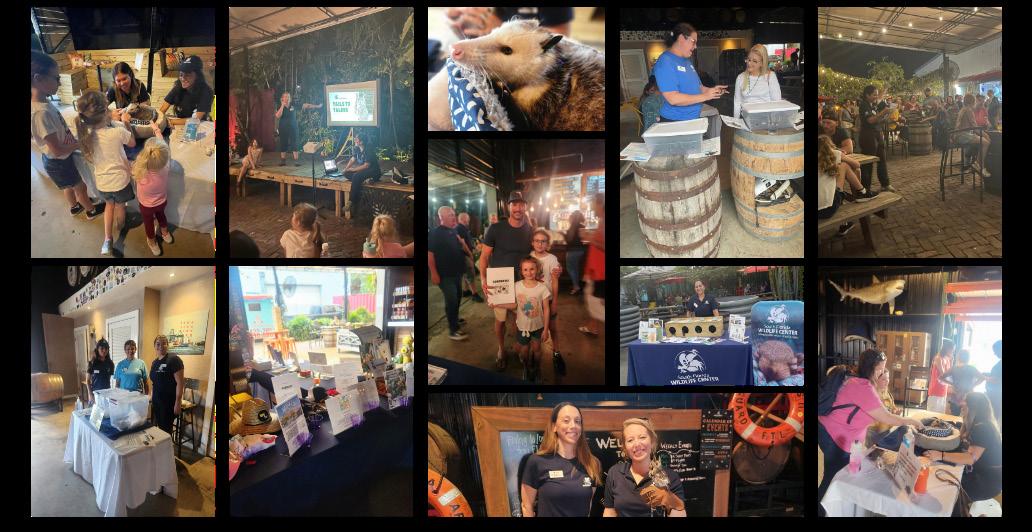
8 | South Florida’s WildSide | Spring 2024
A special thank you to our raffle sponsors : Rock the Ocean Zoo Miami Flamingo Gardens Stoked On Salt ReelHead Apparel Ocean Lifestyle Apparel Force-E Scuba Centers Broward County Sea Turtle Conservation Program
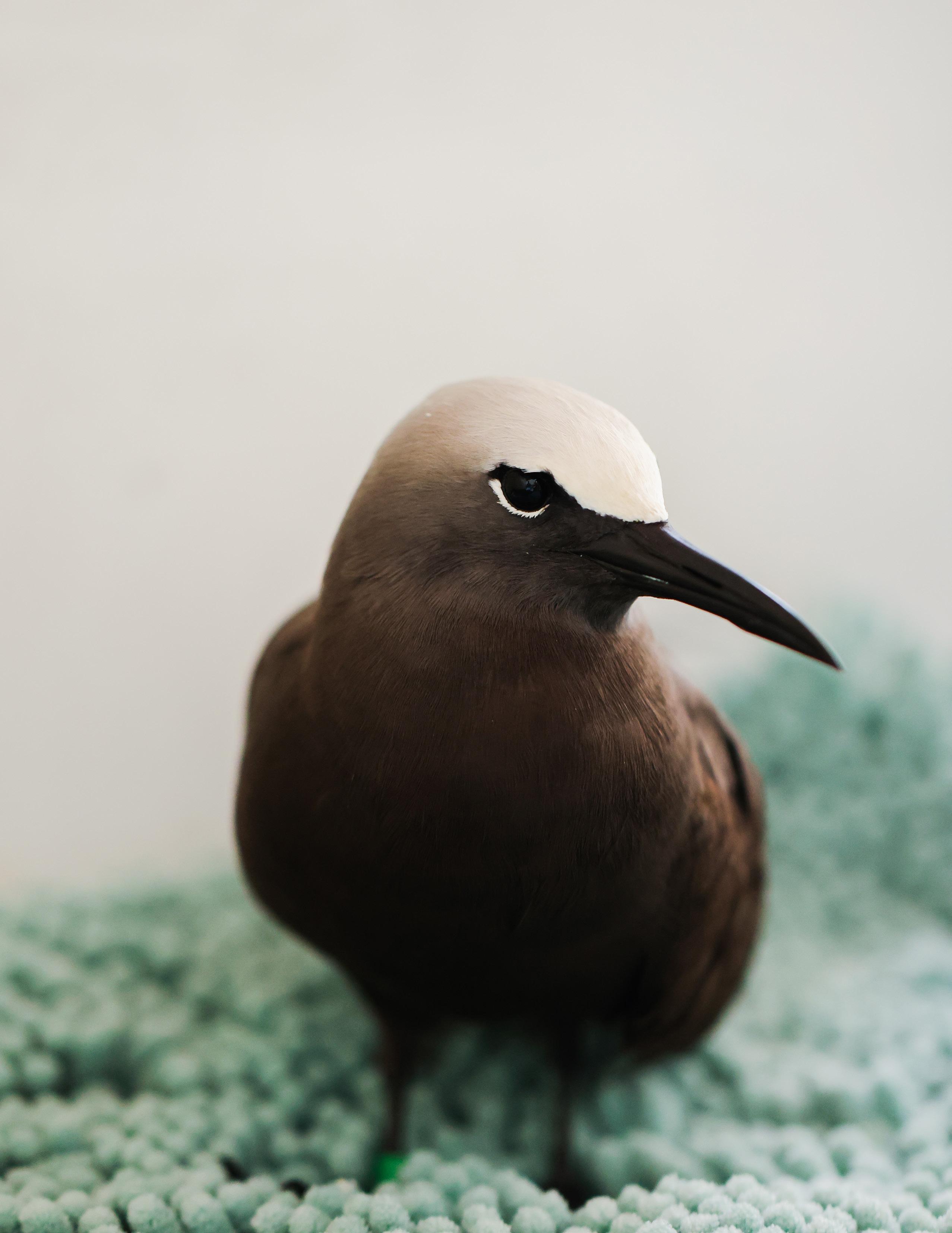
BROWN NODDY #24-1415
The Brown Noddy is a common species spotted around Dry Tortugas during the breeding season, but rarely admitted in our hospital. This patient was transported to our center when a concerned citizen noticed the bird unable to fly or stand. With no obvious injuries, this patient is currently under observation in our seabird clinic while continuing to regain strength.
BLACK RACER #24-1150
The Southern Black Racer is a nonvenomous snake species that is common to the southeastern United States and the most common snake species admitted to our hospital. Southwest Ranches residents discovered this black racer entangled in fencing on their property. During the intake exam, clinic staff removed the small pieces of fencing that remained. With only superficial abrasions and no major injuries, this black racer was released the following day.

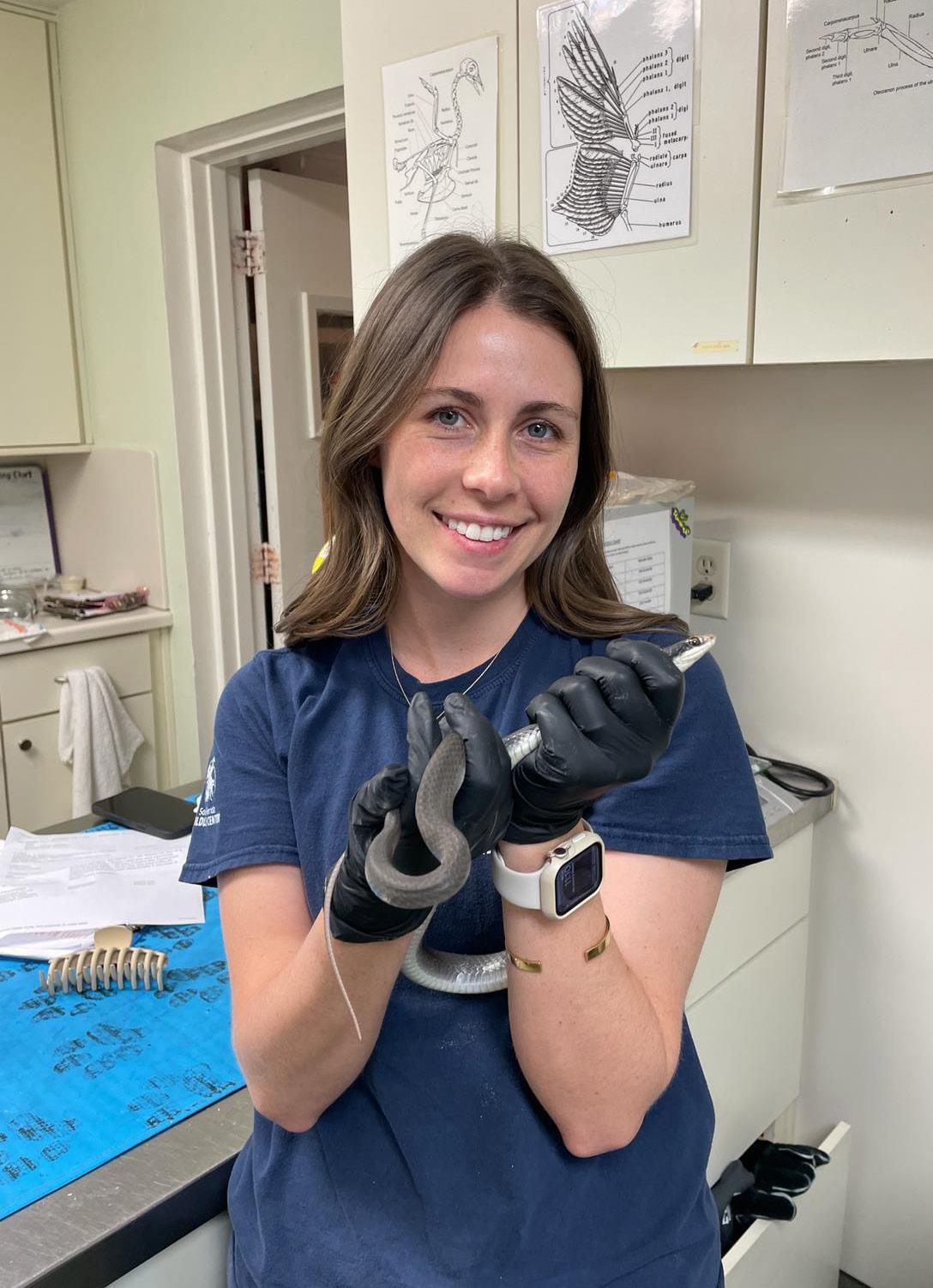
SLITHERING SUCCESS
Snakes play a crucial role in the ecosystem by contributing to the ecological balance and biodiversity of an area. Not only do they help control populations of prey species, but they also serve as an important food source for a variety of predators. As an indicator species, their presence, abundance, and diversity provide valuable insight into the health of the ecosystem.
Florida is home to 46 species of native snakes, with only six being venomous. In our subtropical climate, snakes are active year-round, but their activity levels may vary with seasonal changes in temperature and precipitation. During the cooler months, snakes may become less active and seek shelter in underground burrows or other protected areas. While this varies among species, many snakes breed during the spring and early summer months when temperatures are warmer and there is an abundance of food. During this season, we receive an influx of calls from the community with concerns related to snakes that are spotted in their yards.
For many people, snakes are mysterious and unfamiliar animals, which can lead to apprehension or discomfort. Misconceptions about snakes being aggressive or venomous may further contribute to fear. It's important to acknowledge and understand that fear of snakes is a natural and valid emotion for many people. However, it's also essential to recognize that not all snakes are dangerous or aggressive, and most species are harmless to humans.
To encourage a snake to humanely leave your yard, focus on removing food sources and objects that may be used as shelter. Keeping your yard clean and free of debris will help prevent rodents and other animals from inhabiting your property. In the event there is a snake in your yard, gently spray water towards the snake using a hose.
We always encourage education and respectful coexistence with all wildlife. Learning more about the snake species in your area can help alleviate fear and foster appreciation for these fascinating and ecologically important reptiles.
DID YOU KNOW?
As apex predators or key prey species, they contribute to various ecological functions:
Habitat Engineering: Burrowing and tunneling species, such as burrowing snakes, play a role in soil aeration and turnover. Their activities can enhance soil fertility, nutrient cycling, and the distribution of microorganisms.
Indicator Species: Snakes are sensitive to environmental changes and serve as indicators of ecosystem health. Their presence or absence can reflect alterations in habitat quality, pollution levels, and climate conditions.
Overall, snakes are an integral component of their ecosystem, contributing to their structure, function, and stability. Protecting snake populations and conserving their habitats is essential for maintaining healthy and resilient ecosystems worldwide.
southfloridawildlifecenter.org | 11
COMMUNITY HEROES
Acting as the vigilant eyes and compassionate voices of the natural world, community members play a crucial role in alerting our hospital to wildlife in distress. Whether the animal is a bird with an injured wing or a squirrel that has fallen from their nest, these individuals serve as frontline responders, bridging the gap between vulnerable wildlife and the specialized care they require. Through their observations and swift action, they become invaluable partners in our mission to provide aid and rehabilitation to injured and orphaned wildlife.
Broward Sheriff Fire Rescue came to the assistance of a distressed Brown Pelican that was spotted floating in a canal in Hollywood. Upon further inspection, they discovered the pelican was entangled in the fishing line and had two hook injuries impacting the bird's ability to move. After scooping the pelican onto their boat, they transported the patient to our hospital for treatment. An intake exam confirmed the presence of a treble hook in the left wing, while radiographs showed the pelican ingested a second hook. Clinic staff successfully removed the hook in the wing and cleaned the injury. While receiving supportive care before their scheduled surgery date, the pelican regurgitated the second hook without issue. This patient is finishing treatment and preparing to move to our outdoor Pelican Pool for the final stage of the rehabilitation process.
We extend our heartfelt gratitude to Broward Sheriff Fire Rescue for their vigilance and proactive efforts in alerting us to wildlife in distress. The support of our community plays a pivotal role in safeguarding the biodiversity of South Florida. Your collaboration reinforces the importance of collective action in conservation endeavors, and we are profoundly thankful for your continuous support. Together, we can continue to make a significant difference in ensuring the welfare of wildlife and preserving our ecosystems for generations to come.
DID YOU KNOW?
In 2023, several dozen patients were brought into our care after being found entangled in fishling line and other marine debris.
Efforts to mitigate the impacts of fishing lines on pelicans and other marine life include coastal cleanup initiatives, educational campaigns to raise awareness about responsible fishing practices and proper disposal of fishing gear, and the implementation of regulations to reduce marine debris. Additionally, the use of biodegradable or easily retrievable fishing gear can help minimize the risk of entanglement and reduce the harm caused to pelicans and other marine species.
Our Winter Beach Clean-Up, hosted by Rock the Ocean, removed several hundred pounds of trash from the ocean. Will we see you for our Summer Beach Clean-up on Saturday, July 6th? More details to come!
12 | South Florida’s WildSide | Spring 2024
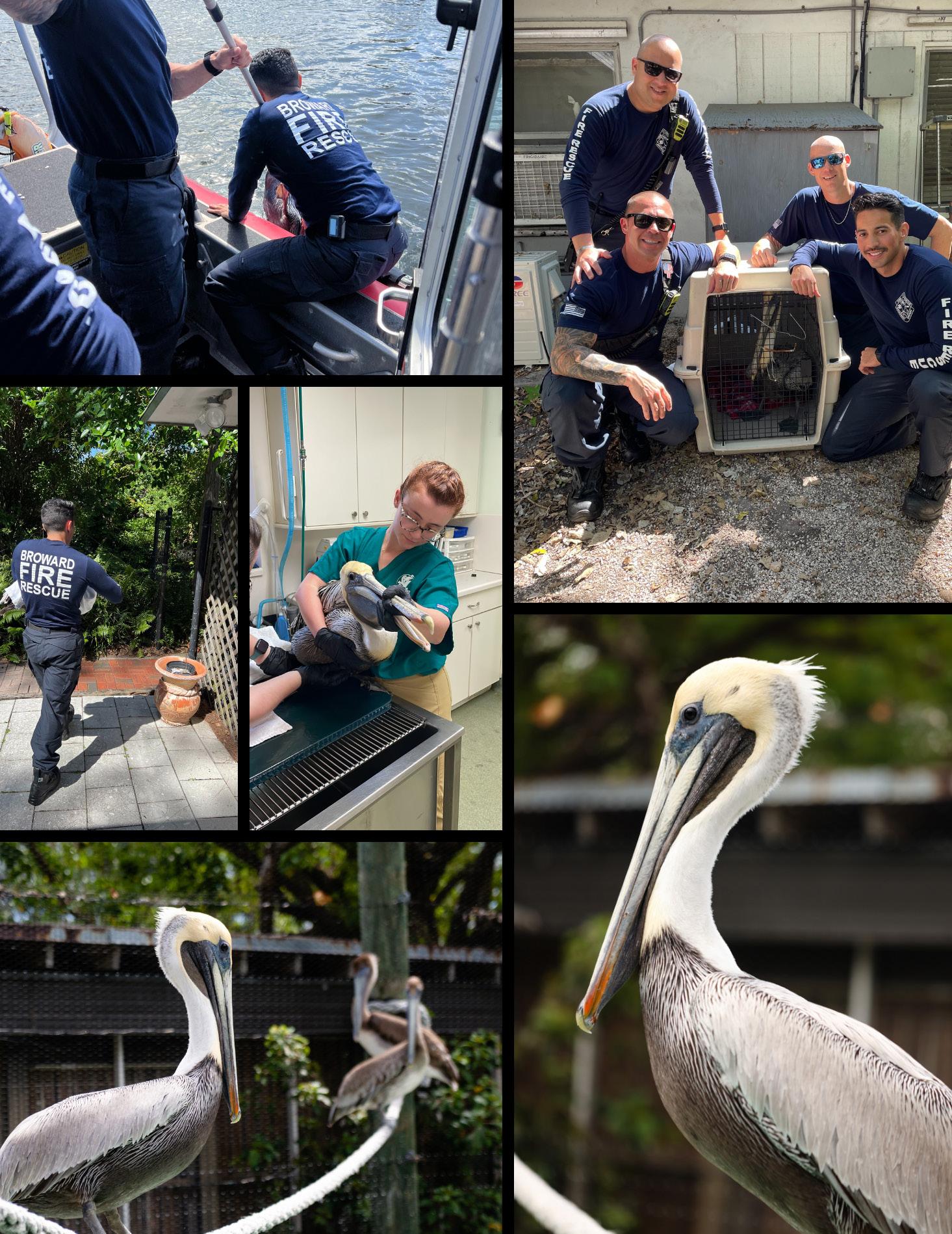
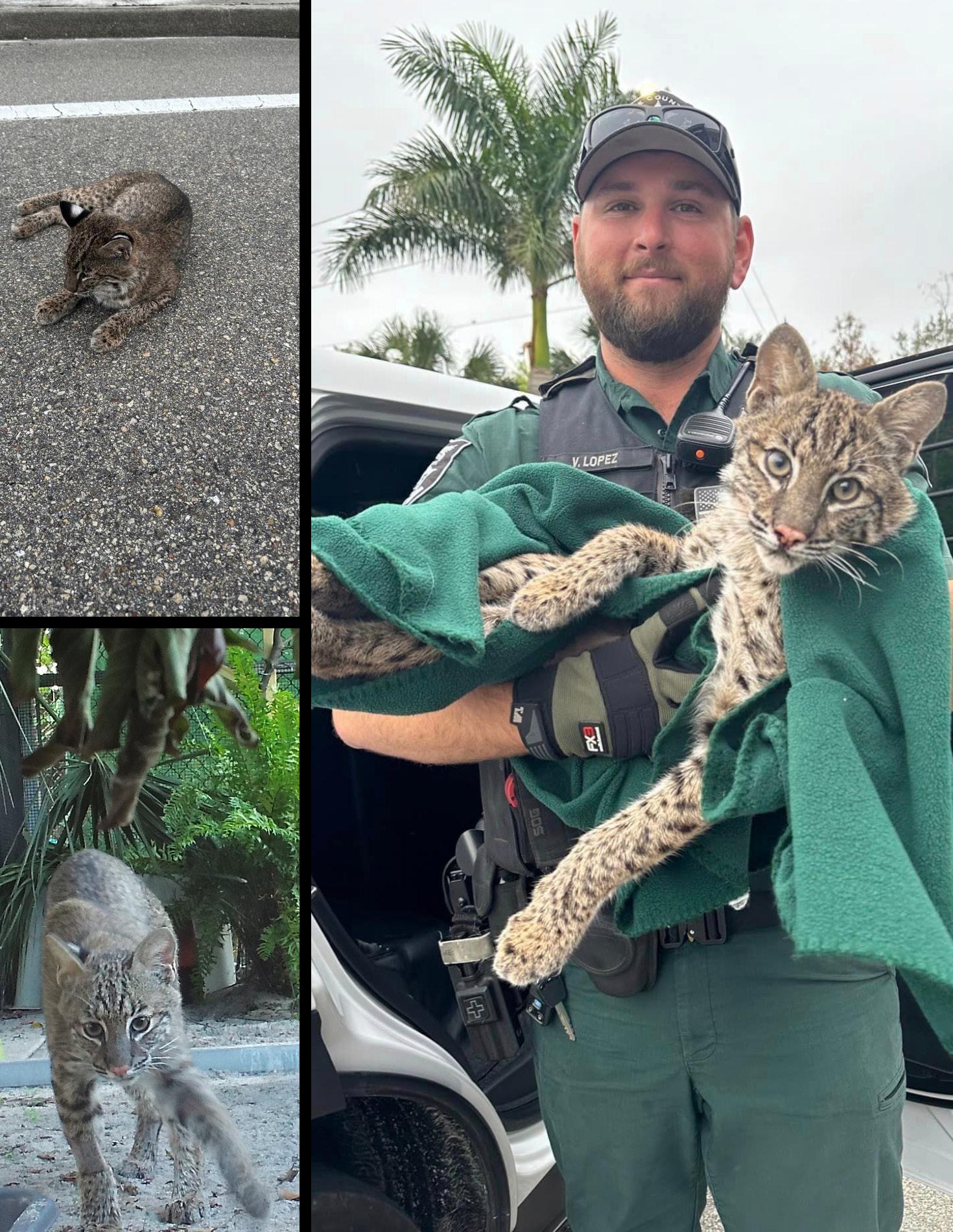
REMARKABLE RESCUE
In Florida, bobcats ( Lynx rufus ) are a native and ecologically important species. These medium-sized carnivores play a vital role in maintaining balanced ecosystems by controlling prey populations, including rodents, rabbits, and other small mammals. As solitary and elusive animals, they typically inhabit a variety of habitats, including forests, swamps, and scrublands, adapting well to both rural and urban environments.
Bobcats in Florida are known for their distinctive appearance, characterized by their short, reddish-brown fur with black spots and tufted ears. They have a muscular build, with hind legs longer than their front legs, aiding in their agility and ability to pounce on prey.
In terms of biology, Florida bobcats have a typical lifespan of around 7 to 10 years in the wild, although some individuals may live longer in captivity. They breed yearround, with peak activity occurring in the winter months. Females typically give birth to a litter of one to six kittens after a gestation period of approximately two months. Kittens are born blind and helpless, relying on their mother for care and protection until they are old enough to hunt on their own.
Despite being considered a species of least concern in terms of conservation status, bobcats in Florida face various threats, including habitat loss and fragmentation, vehicle collisions, and conflicts with humans. Conservation efforts aim to protect and preserve their natural habitats, minimize human-wildlife conflicts, and ensure the long-term survival of this iconic species in Florida’s ecosystems.
We are thrilled to share this incredible story of a subadult male bobcat who has overcome significant injuries and returned to the wild. After being hit by a car in Bonita Springs, FL, this amazing creature faced a challenging road to recovery. The impact of the collision resulted in fractures to the jaw and pelvis, as well as a tail degloving wound that required a partial amputation. Fortunately, Deputy Lopez of the Lee County Sheriff's Office was able to rescue him and get him immediate attention.
He was taken to a team of specialists at CROW Clinic, who worked tirelessly to restructure the extensive damage to the top and lower jaw and then transferred him to us for his remaining rehabilitation and care. Thanks to our specialized recovery areas and expert knowledge, the bobcat made a remarkable recovery, healing at a much faster rate than even the specialists had anticipated.
This is a testament to the exceptional quality of work coming from our center and the respect we have earned from others in the Florida wildlife community. We are proud to have played a part in this bobcat's journey and wish him a long and healthy life in the wild!
Check the video from the Lee County Sheriff's Office Facebook page of his release and our social media posts summarizing his journey with us!
Together, we can make a difference in preserving our natural wor ld and the animals that call it home.
southfloridawildlifecenter.org | 15

MEET GOJI!
We are absolutely thrilled to introduce you to our newest resident, Goji! This adult male red-shouldered hawk has captured our hearts with his bravery and resilience. Found injured near Tampa, FL, Goji was taken in by the Seaside Seabird Sanctuary for essential care. Their rehabbers discovered he had a gunshot wound and fractures in both his left humerus and right femur. Despite their best efforts to heal his injuries, Goji’s ability to fly was permanently impaired, rendering him non-releasable.
Goji is now thriving and ready to start his new life with us. We are honored to be able to provide him with a safe and comfortable home where he can live out the rest of his life in peace and comfort.
Through our Wildlife Education Ambassador Program, resident animals here at SFWC play a crucial role in educating the public about their species, issues these animals face in the wild, and how we can help our local wildlife. Each of these non-releasable animals has a unique story that allows our Outreach Department to inform the public on proper ways to interact with our wild neighbors. With your support, our Outreach and Education program and these incredible animals will continue to help our local wildlife STAY WILD!
SPECIES SPOTLIGHT Red-shouldered Hawk
Buteo lineatus
The Red-Shouldered Hawk, a medium-sized bird of prey, is renowned for its piercing Kee-ah call. These diurnal hawks typically perch while scanning for prey. Upon spotting prey, they swoop down and seize it with their formidable talons. Their diet mainly comprises small mammals and reptiles such as mice and snakes, although they are known to prey on birds, amphibians, and larger mammals, like rabbits.
As the most prevalent hawk species in North America, Red-Shouldered Hawks are commonly sighted across the country, with their primary habitat being the Eastern Temperate Forests that span the eastern United States. They also inhabit the California coast. While individuals in the Northeast and northern Midwest migrate south for the winter, those in the Southeast are typically year-round residents.
Variations in plumage pigmentation among Red-Shouldered Hawks across the United States provide insights into their remarkable ability to adapt to diverse environments. These differences in coloration are attributed to carotenoids and melanins, essential pigments in feather coloration. For instance, individuals in Florida often have lighter breast feathers and grayish heads, while those in the Northeast exhibit a wider range of brown feathers. Interestingly, hawks on the California coast tend to display more vibrant colors, with increased red pigments.
Despite being apex predators, Red-Shouldered Hawks face various anthropogenic threats. Habitat loss and fragmentation due to urbanization and deforestation pose significant challenges, impacting their food supply and forcing them into suburban areas where they’re at risk of collisions with vehicles and power lines. Additionally, accidental pesticide poisoning and plastic pollution, particularly in Florida, are emerging threats to their populations.
At our Center, we are committed to promoting peaceful coexistence between humans and wildlife, and our newest Ambassador Animal, Goji, serves as a poignant reminder of the importance of protecting our native animals. Red-shouldered hawks are one of our most common patients, and Goji’s story provides us with a unique opportunity to educate the public about these magnificent creatures and how we can all play a role in their conservation.

STAFF FEATURE Eloisa Valencia
Wildlife Rehabilitator
Meet Eloisa! One of SFWC’s passionate and dedicated rehabilitators. You will typically find her in our Wildlife Ward administering medications, or in our outdoor habitats ensuring our patients have everything they need for the final stages of their rehabilitation journey.
When did you start working for SFWC?
I started volunteering with SFWC in 2019. I enjoyed working with the animals so much that when a position opened up in the Rehabilitation Department, I applied. I joined the team as a staff member in 2022.
What is your favorite part of the job?
My favorite part of the job is seeing the recovery process of the animals. Although I do not like to see them sick or injured, I give them a lot of care each day until they are ready to return to their habitat and be free.
Do you feel like your role plays a part in SFWC’s mission?
Yes, I feel that I do play an important role. I feel that by doing my work with love, and giving it the importance and attention that each animal and each situation requires, I am contributing to the mission of SFWC.
Fun Fact about
you!
A fun fact about me is that I competed in swimming for 10 years. This is why I love everything that has to do with water! Whether swimming, diving, or any other aquatic activity, I really enjoy being out there.
What do you look forward to in your future career?
I look forward to helping and learning as much as I can about wildlife rehabilitation here in Florida. I would also like to travel to other places and learn about their wildlife.
What is your favorite patient story?
One of my favorite patient stories was about a pelican who had to receive medicine in both of his eyes. I had to give this patient various medications three times a day for a few weeks. We had to be very patient and work hard to help him recuperate. It was beautiful to see him make a full recovery and be free again.
18 | South Florida’s WildSide | Spring 2024


TURKEY VULTURE #24-952
This Turkey Vulture was transported to our wildlife hospital after being found on the side of the road in Boca Raton with suspected trauma from a vehicle collision. During the intake exam, hospital staff took radiograph images which confirmed a spiral fracture in the right wing. Our veterinarians performed surgery on the patient, bandaged the wound and moved the patient to our Wildlife Ward for recovery. After thirteen days, the patient was moved to one of our Raptor Mews for the next stage of rehabilitation. The most recent radiographs show that the wing is healing well. The patient will continue to remain in our Raptor Mews until the wing is completely healed and flight is back to normal.
UNWANTED PLANTS?
Are you looking to give your unwanted plants a new purpose? Look no further! Our aviaries are calling for plant donations to create the perfect natural environment for birds undergoing rehabilitation before their release into the wild. Join us this spring in providing a nurturing space for these feathered friends to recover and thrive. Your contribution will make a significant impact on their journey back to the wild.
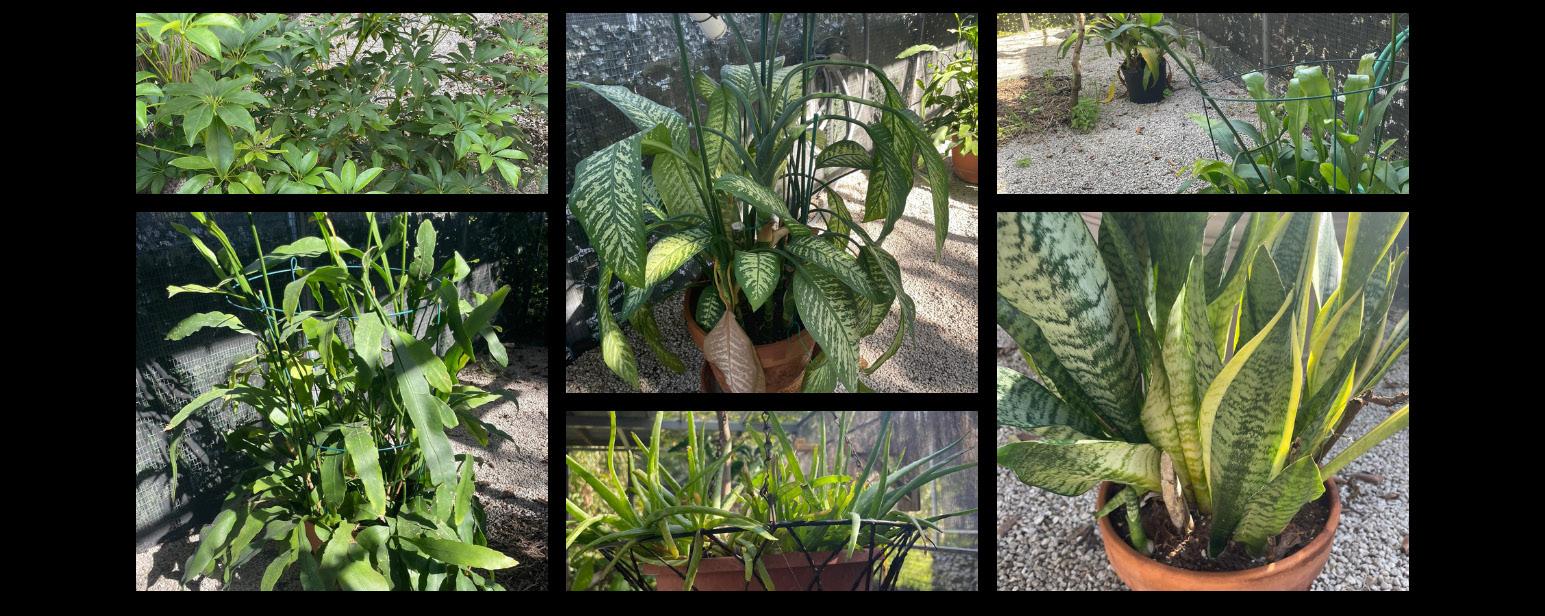
PLUNGING PERIL:
Wildlife and the Hazards of Pool Encounters
The spring and summer seasons are the perfect time to get outdoors and enjoy what nature has to offer. Soaking up the sun by the pool is a good way to unwind after the long winter months. We aren’t the only ones more active as the seasons start to change. While backyard swimming pools invoke a feeling of summer fun, they can be dangerous and potentially deadly for wildlife.
Every year we receive calls from concerned citizens that have discovered wildlife that has fallen into their pool. These calls are more frequent during baby season as young wildlife explore their new environments away from the care of their parents. Although this is a common occurrence, there are simple things you can do to make pool areas safer for the wildlife that may encounter them. For example, installing fencing around your pool can prevent animals from approaching the water's edge, while installing water-exit devices will allow them to get out on their own.
In case an animal takes a dip before you can implement these measures, you can utilize the following items for rescue: using a pool net or the soft side of a broom, scoop the animal out of the water and place it in a box or container with appropriate air flow. Always be mindful of your safety when attempting a rescue! Once the animal is contained, contact your local wildlife hospital for advice. We are open 7 days a week and ready to help.
southfloridawildlifecenter.org | 21
WILDLIFE WARRIORS
Explore your passion for wildlife and join us for an exciting opportunity to learn about becoming a wildlife rescuer at our center. Mark your calendar for our upcoming Introduction to Rescue classes in June and get ready to embark on a fulfilling journey of saving and caring for our precious wildlife. Stay tuned for more details on our website and get ready to make a difference in the lives of animals in need!

APPLY TODAY!
Calling all high school and college students passionate about wildlife rehabilitation and conservation! Dive into a hands-on learning experience this fall by joining our internship program. Explore the world of wildlife rehabilitation and conservation while gaining valuable skills. Visit our website to apply and be part of something truly impactful!

22 | South Florida’s
FLORIDA COOTER #24-1021
Concerned citizens from Boca Raton transported this Florida Cooter to our hospital when they found the turtle at an intersection with an injury to the shell. An intake exam confirmed fractures along the shell, as well as a right hip fracture. Under anesthesia, clinic staff stabilized the shell fractures using wires to hold the area in place and allow for proper alignment while healing. After three weeks of supportive care, the fractures have begun to stabilize. This patient is currently undergoing supportive care in our Wildlife Ward while the injuries continue to heal.
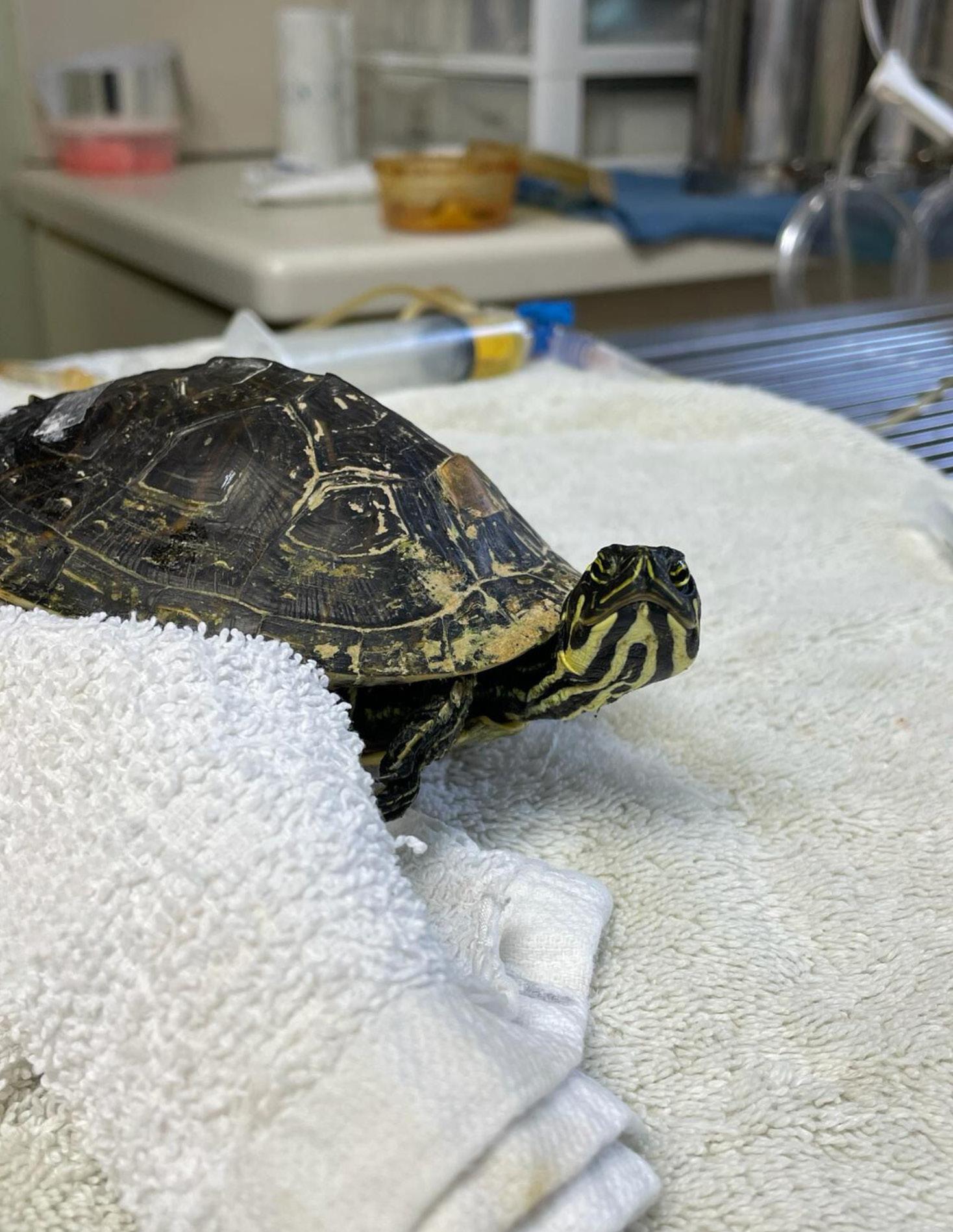

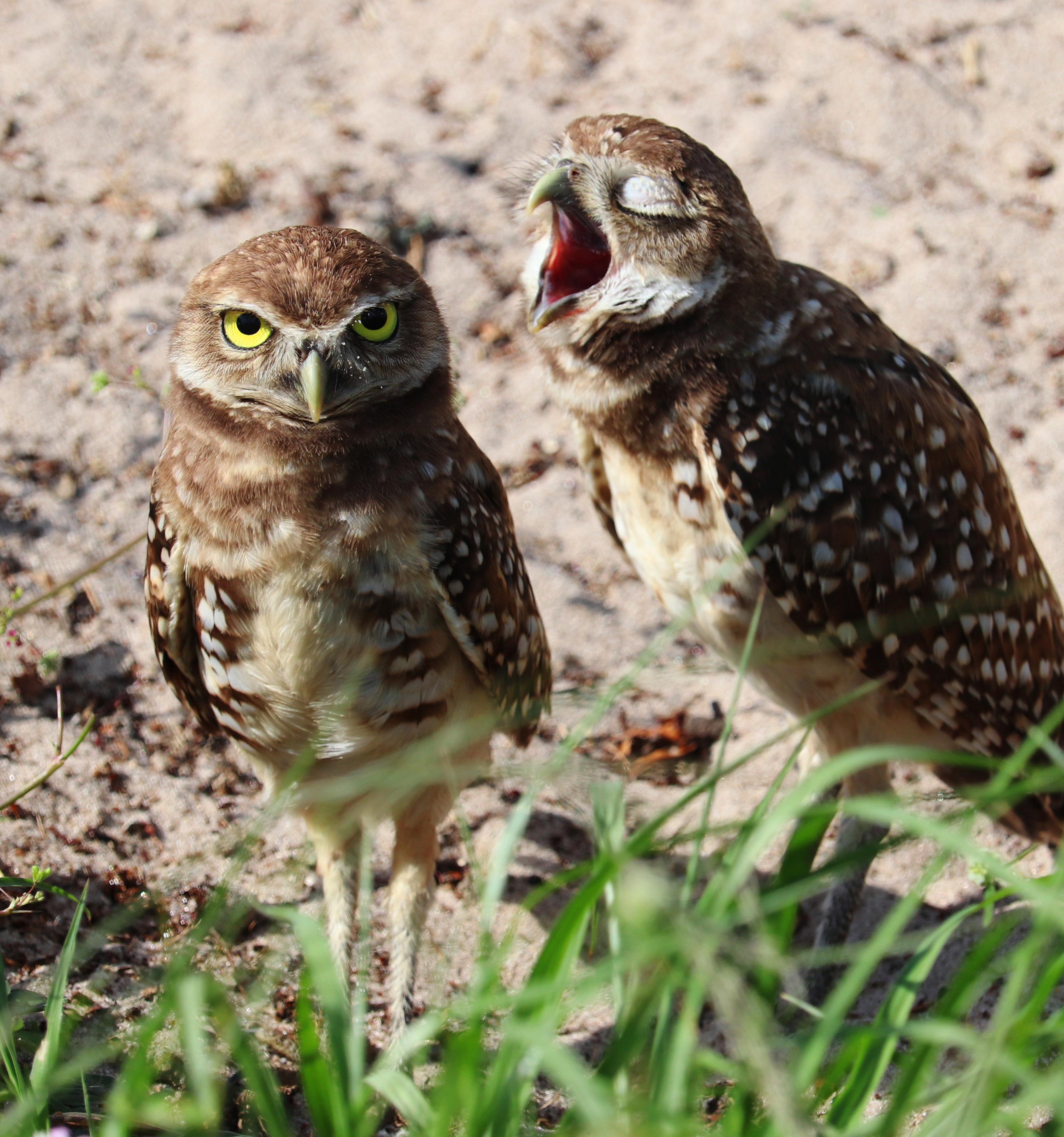
Did you hear?! Thanks to the The Batchelor Foundation's incredible generosity, we have been presented with The Batchelor Foundation Challenge. Your gift, at any level, will be matched 1:1 — up to $50,000!
We need your help today to maximize this wonderful matching opportunity. Please do not delay; we cannot do this alone. Together, we can continue to meet the emerging needs of wildlife in crisis.

Learn more southfloridawildlifecenter.org
954 524 4302
info@southfloridawildlifecenter.org
3200 SW 4th Avenue, Fort Lauderdale, FL 33315
Hours: 9:00AM - 4:30PM
@SouthFloridaWildlifeCenter
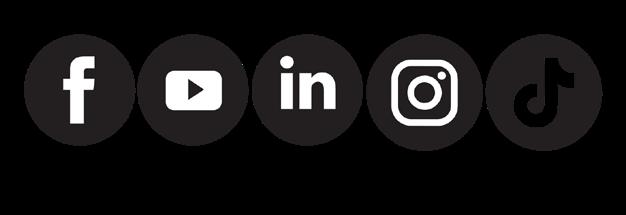
Giguere.
Photo is 2022 Wildlife Photography Contest entry of Burrowing Owls by Denise




























